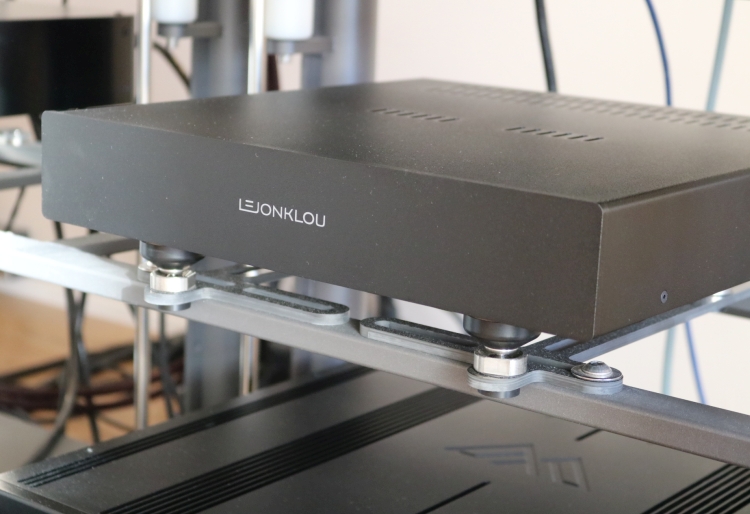
Comparisons
In many areas such as linearity, neutrality, articulation, and resolution, the Källa (fed directly from the iPad Qobuz app) is quite similar to the much more expensive Aqua combo (from a UPnP stream either via Bubble UPnP and Qobuz), which is quite something to achieve by a single box unit that costs significantly less.
Where the Källa’s sound diverges most notably from the Aqua combo, is in terms of bass and the overall solidity. Whereas the Aqua components provide a more robust, and well-rooted sound in addition to being very linear, the Lejonklou Källa has more of a light-footed approach. It focuses more on fluidity and flow than on achieving the maximum in terms of earthiness and solidity. Secondarily, the Aqua combo manages to represent the music with deeper tonal saturation while remaining every bit as neutral and linear as the Kalla.
Although the Källa appears a little lean in comparison to the Aqua combo, its bass is just as precise and articulate and actually remarkably well-formed with absolutely excellent mid-bass performance and good extension if missing a little pressure at the lowest frequencies. With the Källa, there is just no overhang whatsoever which I personally feel is definitely preferable to the overt thickness or blur that plagues some DACs.
By the way, as far as I can make fair comparisons, the COS D10 appears to have a more explicit and concentrated sound than the Källa, with even tighter bass. From what I can discern by extrapolating the influence of the Audio-GD Master 1 preamp versus the COS D10’s built-in preamp, the latter is even more expressive and precise but is also positioned more on the analytical side of things. It’s important to note that the Källa, for all its precision and neutrality, retains a sense of flow.
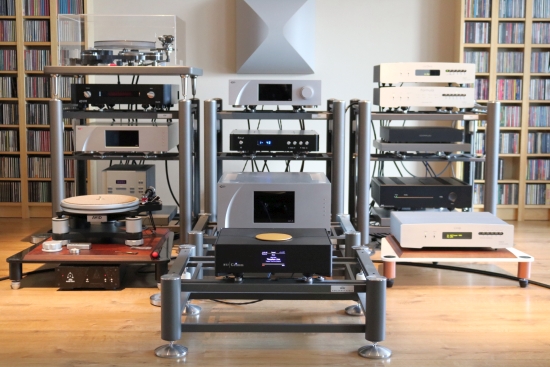
More comparisons
The Antipodes K50 server has a seductively lush and relaxed sound and majors in deep tonal saturation while being relatively less endowed in terms of articulation and precision. In many ways, and even with the ideal placement, switch, and power cable, the Källa has a sonic presentation that could be said to be diametrically opposed to the Antipodes K50’s presentation. But as it follows, the Källa majors precisely in the areas where the K50 is less accomplished, which are articulation, resolution, and overall precision.
The Grandinote Volta offers a large acoustic with rich bass and a smooth and colorful midrange. Emotionally, it is immediately captivating and initially, it seems to offer a more satisfying experience than the Kalla. But it is also less linear and transparent, its bass is a little soft, and it has a definite character of its own. The Källa, on the other hand, has more articulate and more precise bass, is more refined, and has higher resolution.
Between these two network players, I’m actually hard-pressed to pick a favorite. On the one hand, my desire for linearity and precision, especially in the bass, leads me to the Kalla and it is, without doubt, the more neutral source. On the other hand, the Volta offers a less factual and harmonically richer presentation, even if it is clear that the unit has a definite character.
The Grimm MU1, finally, is less lush than the K50 and the Volta and indeed more neutral while being more highly resolving than both. The server only works with Roon but offers the best sound quality that I have heard with RAAT. When comparing the Källa (with the Qobuz app) to the Grimm MU1 (using Roon), both using the same Qobuz source, I was amazed at how close the Källa comes in terms of the overall balance and tonality. Once again, it is clear that Fredrik’s painstaking tweaking has paid off. However, as well-balanced as the Kalla is, like the Aqua combo, the Grimm offers a more rooted sound with deeper tonal saturation, which ultimately leads to a more complete and convincingly realistic experience. But to be fair, the Grimm costs 10.000 euros and that excludes storage, and more importantly, a DAC!
Apps
Because there were already more than enough variables in relation to a device that is seemingly as simple as the Källa, I’ve saved this section for last. As Fredrik indicates, the Källa’s sound is influenced by the control point and app that it is used with. Without going overboard on this subject (apparently, one can go as far as to make distinctions between various models of the iPhone and iPad), I have tried the methods that were directly available to me.
Qobuz app on iPad Pro 11 (first gen)
Right off the bat, I will unveil that the native Qobuz app on my iPad Pro 11 inch (first gen) sounded best to me and this is what I used for obtaining my impressions for this review. It is with this method that the Källa sounded most articulate and robust, and most expressive.
Spotify Premium on an iPhone 6
This produced a softer, less distinct, and less powerful sound than the preferred Qobuz method and was the least preferred method.
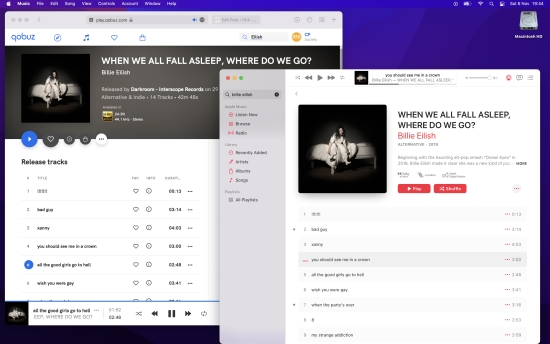
Apple Music on a Macbook Air M1 (first gen)
This is easily the second-best method, sounding considerably fuller and more robust than Spotify and being just as detailed, open, and effortlessly fluid as the preferred Qobuz method, yielding to it only in terms of ultimate solidity and dynamic impact.
Qobuz web app on a Macbook Air M1 (first gen)
Interestingly, Qobuz sounded incredibly similar to the Apple Music app on the same device. The differences that I think I heard were too little to worry about. It seems that in this case the host hardware and its OS are more decisive for the end result than the streaming source or even the music file format.
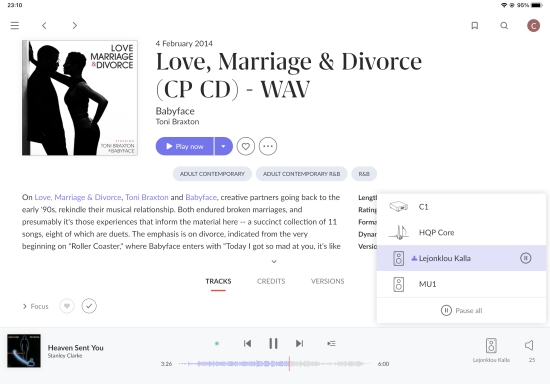
Roon
Although the Källa is not compatible with Roon, Roon offers compatibility with nearly every format out there, and it also works with the Källa. In line with earlier experiences, Roon offers a superlative interface but it produces a sound that is fuller and richer yet also softer and less well-defined than when using the same streaming source directly via the Qobuz app. I would rank this method third best, better than Spotify but not as good as Apple Music.
Stability
Strangely, at first, the Qobuz and Spotify apps frequently lead to stuttering and sometimes a track cutting out altogether, while Qobuz in Roon and Apple Music worked 100% stably. Interestingly, all the instability was resolved once I had swapped my own switch for the recommended Netgear switch. Peculiarly, I never had any stuttering before, but perhaps Roon RAAT and UPnP streams place different demands on the network. In any event, even if the notion of sonic differences among network switches raises some eyebrows, it’s irrefutable that they make a difference in terms of stability and reliability.
Limitations
While the Källa can be controlled using a wide range of Apple devices, and can even be used on Windows when using Roon, there are some limitations. The Spotify and Qobuz web apps and the Qobuz application on Windows did not provide any means of connecting to the Källa. However, the Qobuz web app on the Macbook Air did work, and sounded really great, too!
Conclusion
With the Källa network player, designer Fredrik Lejonklou made a very conscious decision to focus on Apple control points for the device’s native compatibility (although it also works with Roon which runs on Apple, Windows, Linux, and Android). The primary objective was to achieve the most involving and thrilling sound possible while minimizing the potential for external influences such as 3rd party software or necessary updates to ruin the experience or the sound quality.
The Källa has an engagingly crisp, fast, rhythmic, and upbeat presentation. It is exceedingly neutral and sounds very linear and transparent, with a fabulously high resolution of fine detail and it is great at discerning the various layers of which a soundstage is composed. Whereas high precision and neutrality can sometimes lend a clinical feeling to the music, the Källa actually strikes a great balance between articulate precision and expression on the one hand, and refinement, fluidity, and flow on the other.
Is it the ideal network audio component for everyone? My bet is that its simplicity will make it ideal for one group while not appealing to another group. Such is life. But no matter which camp you find yourself in, I can say with confidence that the Källa is among the best-sounding network players that I have heard at its price.
External Links
Distributor for the Benelux, UK, and Germany: hexagonaudio
Manufacturer’s website: Lejonklou






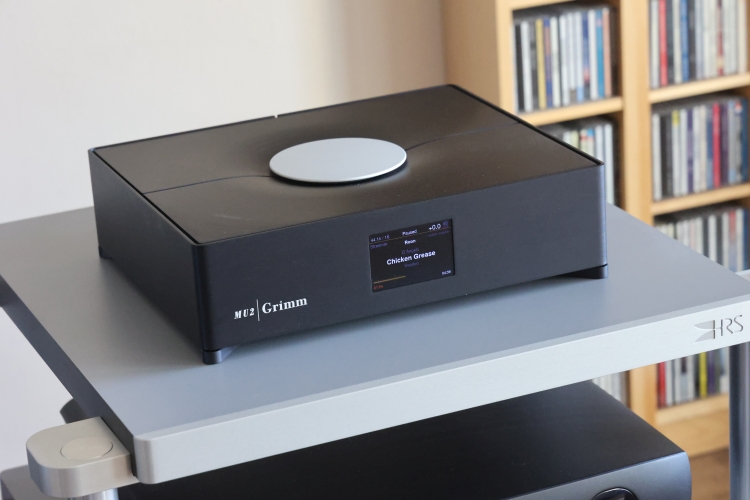
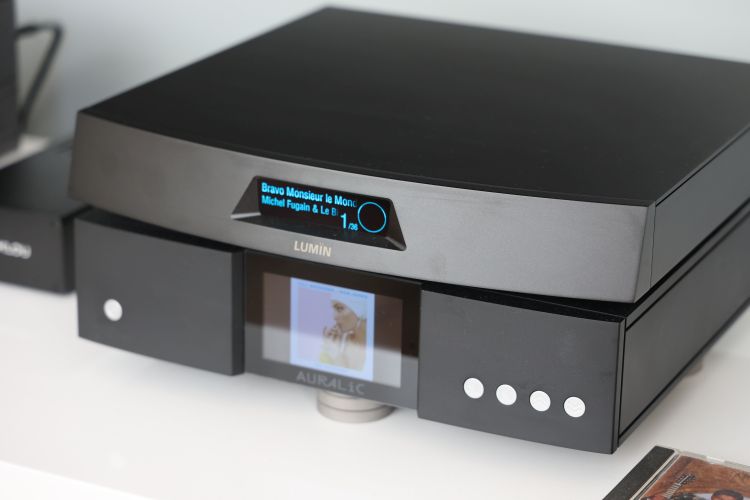
Hi Christiaan,
thanks for the review.
You showed a photo with Källa sitting on an Artesania Modular Rack but afaik there was no description how it sounds on this rack. I suppose that the sound signature of this rack would be the best match for Källa.
What do you think about?
Did you try it with this rack?
Thanks again
Matt
Hi Matt, indeed, in order to not add too many variables to the review, I left out my impressions of the Floor Stand. But your hunch is correct: the Artesania Modular Rack or Floor Platform makes a great sonic match with the Källa. Just note that the Källa’s feet release an oily substance that permeates the wood and cannot be removed. You can counteract this by using a floor disc or anything flat and hard but do note that these intermediate discs add a sound of their own. Especially metal discs add an edge that I don’t think works well with the Källa. The best and least “sounding” pads that I found are the Artesania Neoprene discs. All they do, compared to directly placed feet, is to gently round the bass and reduce the solidity and incisiveness. There are many other compliant rubber-like materials that you can use that don’t make stains but when Fredrik uses these specific ones, you can bet that it’s going to be hard.
Hi Christiaan,
which DAC was the partner of the Grimm and Antipodes server when you made the comparison with Källa?
Thanks
Matt
That was the Aqua Formula xHD.
Hello – just a gentle request: perhaps from time to time you might use Tidal as a streaming source? After many attempts to clarify signal resolution with them, your thoughts/experiences – by comparison with other soources within equipment reviews – would be highly valued.
Hi DR, In the vast majority of my comparisons, sonically, I preferred Qobuz over Tidal. I prefer to have my files delivered in a format as close to native as possible, and as such, I am also not a fan of MQA. Naturally, I have made comparisons using specially prepared MQA vs FLAC files but the outcome was in part inconclusive (neither better nor worse), part good (MQA better than FLAC), and part bad (MQA sounding processed to my ears). Then there’s the rumor that FLAC files on Tidal are actually real-time converted MQA’s which, if true, is not great, either. At this moment, there’s not a compelling argument for me to add Tidal.
Understood. I appreciate your position on this. I’ve not auditioned Qobuz – was not enthused about the interface when I visited – but the only issue for me is that I’ve simply made an investment over the years in Tidal – playlists, albums, etc. – and starting over is daunting. I use and enjoy your reviews, and very much look forward to your new postings. Best thoughts.
Christian,
An excellent and thorough review as usual I am sure this is an excellent sounding device but it seems to me a bit of a dead end product. The simple inclusion of a digital output would give an easy upgrade path and more versatility to the end user. I do understand the attraction for a closed system sonically but with streaming devices I feel like feature set matters as much as sound quality in some cases maybe even more.
It’s quite funny how the device used as a controller can influence the sound, when I first got my Auralic Aries Mini I controlled it with my Iphone. I eventually got an Ipad Mini just to use as a controller and the jump in SQ was immediate and to me inexplicable. But that’s audio for you.
Cheers,
Jon
Hi Jon, I agree it won’t be the ideal device for everyone but the big variance among all the steps involved (controller-streamer-interface-DAC etc) is precisely the reason why the designer chose a closed design. Best, CP
Hello. Thank you very much for this review. Having tested this device, I totally agree with many of the points, and in particular with its amazing qualities.
Just a small disagreement; for me, the device is not limited to the Apple environment (which might scare some people away). Roon allows you to be free from this (you can control the Roon server with android devices). Am I wrong?
You are right and I also mention Roon in the review:-)
Oh yes Christian ! But i was thinking of this particular sentence in your conclusion (and some people only read the conclusions 😉 : “With the Källa network player, designer Fredrik Lejonklou made a very conscious decision to limit the device’s compatibility to Apple control points.” It might dissuade some non-Apple guys from discovering this beautiful streamer. But I don’t want to dwell on it 😉
Ok, fair point. I’ve now added it to the conclusion as well:-). Do please note that Roon is not the recommended method for obtaining the best sound from it.
I enjoyed your youtube review. I wondered what the background jazz was?
That was free-to-use YouTube stock music. Sorry, I don’t recall the artist and don’t have the edit project at hand to check.
No worries. Thanks for replying!